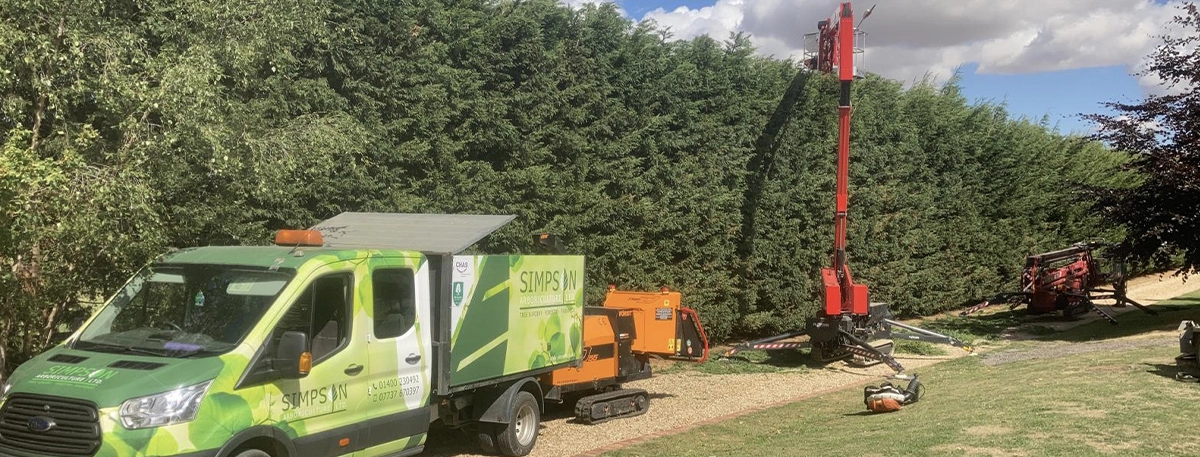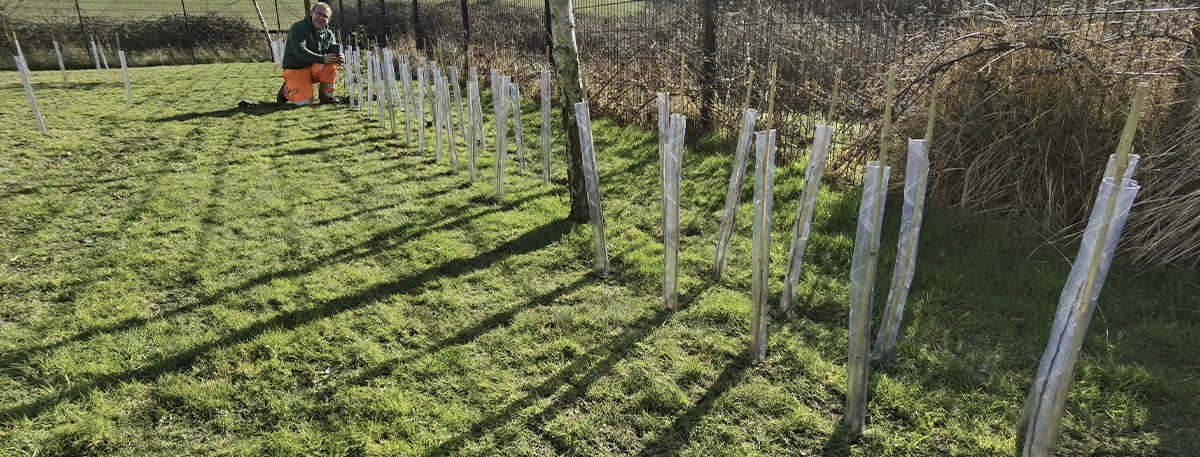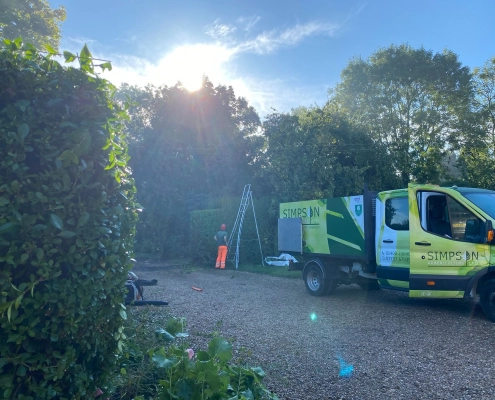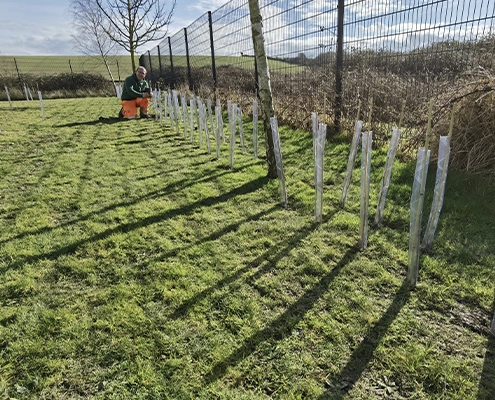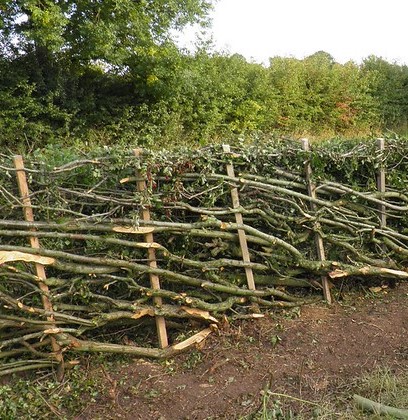At Simpson Arboriculture Ltd, we are pleased to offer both tree and hedge planting services as well as hedge trimming and reductions.
Talk to our team about your plans for tree planting or hedge laying and we would be happy to advise and provide a quote for the work. We take on small-scale tree planting work in domestic gardens as well as larger replanting projects at a commercial level. For hedge planting, there are various methods – we can provide a quotation for all of the hedge plants and equipment needed. You can choose between potted hedge plants or bare root balls. We can advise you on hedge plant species as well as the age of hedge plants to choose to achieve the desired height and finish you are aiming for.
Hedges are a great choice for many reasons. They can provide privacy, shade, noise reduction, a natural windbreak and reduce pollution – they effectively create a living fence and trees are a crucially important and necessary part of our environment. Our hedge maintenance services contributes to the overall tidy appearance of your hedges as well as to take care of them.
With extensive tree knowledge and tree-planting experience, our team are always happy to advise you.
Hedge trimming and hedge reductions
Regular hedge trimming contributes to the overall tidy appearance of your hedges. For smaller scale hedge trimming, our arborists use a combination of petrol, electric and long reach hedge trimmers and ladders. For larger hedges, we can use the MEWP for easy access. We have recently invested in the latest battery powered equipment. This reduces the risk of HAVs (hand arm vibration system) for our operatives, as well as reducing noise and lowering fuel emissions into the atmosphere.
Hedge planting
At Simpson Arboriculture Ltd, we are pleased to offer both tree and hedge planting services.
Hedges are a great choice for many reasons. They can provide privacy, shade, noise reduction, a natural windbreak and reduce pollution. There are various methods for hedge planting and we can provide a quotation all of the hedge plants and equipment needed.
You can choose between potted hedge plants or bare root balls. We can advise you on hedge plant species as well as the age of hedge plants to choose to achieve the desired height and finish you are aiming for.
Hedge laying
Hedge laying effectively creates a living fence. It is a great way of regenerating an old or overgrown hedgerow and encourages new growth. It involves cutting down into the stem at an angle just above ground level. This will allow the stem to bend over enough to lay it down. This is then repeated along the hedgerow, continuing to lay the cut stems in the same direction. Stakes can then be used to hold the stems in place and provide a stable and sturdy finish.
Once a hedge has been laid, regular maintenance should enable it to last for many years to come. Our expert team have ample experience in hedge laying and can advise on the style and method appropriate to achieve the intended finish.
Tree planting
At Simpson Arboriculture, we always actively encourage and promote replanting wherever possible.
Talk to our team about your plans for tree planting and we would be happy to advise and provide a quote for the work. We take on small scale tree planting work in domestic gardens as well as larger replanting projects at a commercial level.
Why plant trees?
Trees are a crucially important and necessary part of our environment. Aside from being the longest-living species on our planet, they give us oxygen, absorb carbon and are an essential part of our world’s ecosystems.
Trees provide a huge benefit to our health. Leaves can filter out pollutants found in the air such as exhaust fumes, smoke and various industrial emissions. Not only that, phytoncides which are chemicals released by trees and plants have been found to boost the human immune system!
The link between green space and mental health and well-being has long been recognised but is only just beginning to be researched, proven and fully understood. Studies have found that being in green, natural spaces can reduce stress levels and have a significant impact on conditions such as anxiety and depression, as well as improve concentration and memory.
As well as providing a huge benefit to our personal health, trees also provide ample benefits to the environment. Trees boost the presence of wildlife by providing food, shade and shelter for animals such as birds, bats and squirrels.
Trees provide a link between past, present and future. They are often a precious part of our country’s history and help us to identify and appreciate the changing seasons.
When to plant trees?
We recommend that new trees are planted between October and April. Although it is worth avoiding tree planting during very cold spells as the ground will be hard and frozen, making it difficult for digging.
What trees to plant where
There are so many great reasons for tree planting. If you are lucky enough to have a garden with space to plant a tree, this is an exciting choice to make. We would always encourage you to choose native species when tree planting as these species will not only thrive in the British weather and climate but also provide food and shelter for birds and other wildlife.
But before you go to your local garden centre and choose a sapling for planting, there are some questions worth asking yourself. What do you want your tree to do? How much space do you have? And what is the soil like?
Perhaps you are looking for a tree to provide more shade in your garden or form a habitat for local wildlife. Are you eager to reduce pollution or noise in your garden? Or would trees be ideal to act as a windbreak? Would you like to look out on a tree that changes with the seasons, adding colour and interest to your surroundings?
These questions are all worth considering as this will help you determine what species of tree to choose.
A shrub such as hawthorn, sumach or dogwood is great if space is limited- these will remain fairly small if pruned and maintained regularly. They tend to grow well even where nutrients, sunlight and water are in short supply. They also look beautiful and vary year-round, from bright flowers to autumn hues.
Fruit trees such as apple, cherry or pear trees are great if you are looking for a medium-sized tree (growing to around 10-12m) to add shade and interest to your garden, but where you don’t want it to dominate the space. They also come with the added benefit of growing your own fruit, as well as boasting beautiful spring blossoms.
Trees such as cypress, willow and poplar grow surprisingly fast! So this is worth keeping in mind for the years to come- is there space for one of these species to grow and thrive? Or would it become dominant and problematic?
Walnut, oak and lime trees are fantastic for providing both habitat and shade to a garden, but it is worth bearing in mind that they can grow up to 20m.
Evergreens such as conifers are ideal for acting as a windbreak. They also help to reduce both noise and pollution, which is ideal if you live in an urban area. Remember to look out for features such as telephone wires as these tree species are likely to grow into them. It’s worth allowing 6 metres or more from any electrical wires to allow them to thrive.
It is advisable to plant a tree at least 15 feet away from a house or other building’s foundations. This should be increased depending on the size of the tree.
With extensive tree knowledge and tree-planting experience, our team are always happy to advise you.
For more advice and a step-by-step guide to planting a tree, please visit Royal Horticultural Society’s (RHS) website.
Caring for new trees
How can you make sure that your new tree grows and thrives? Here are a few tips and tricks for caring for your newly planted tree-
- Water regularly! New trees should be watered daily for the first few weeks, then every 2-3 days for 3-12 weeks after planting. You can continue to water the new tree once a week for the first year to give it the best start. After this time, your trees will adapt to natural conditions, although during particularly hot, dry periods, you can ensure the ground is well saturated to allow water to soak into the soil and roots.
- Weeding. Keeping an area of approximately 1 metre around the tree clear of weeds and grass for the first few years will help to reduce competition for water and nutrients.
- Mulch, bark and straw can all contribute to suppressing weeds and should be mixed into the soil at a depth of around 10cm.
- Tree guards. Ensure that any canes and tree guards are firmly planted into the soil. It’s worth checking these after weather such as storms and high winds.
For more information, see the Woodland Trust’s website on how to care for your trees.

